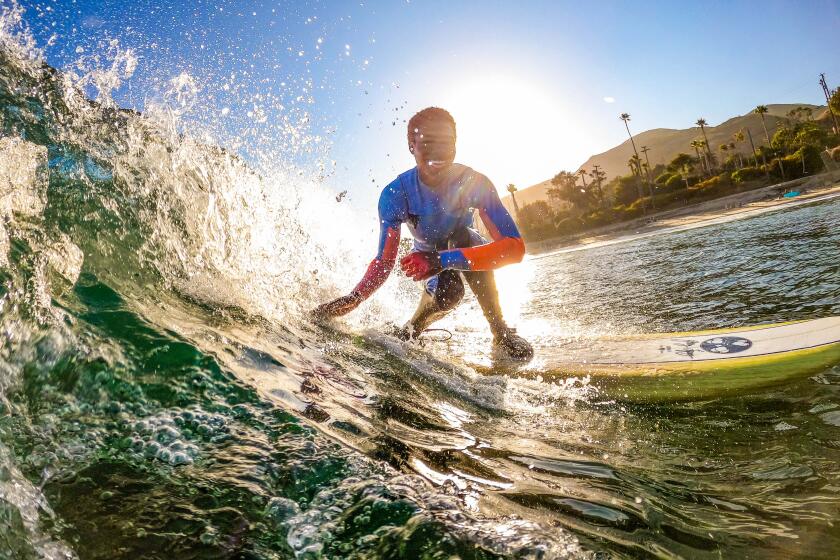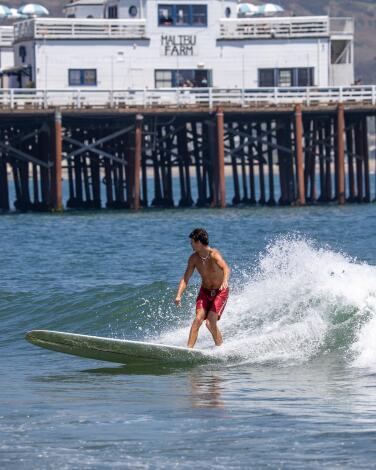(Allen J. Schaben / Los Angeles Times)
Where to catch a wave this summer in SoCal, for every kind of surfer
- Share via
Summertime is in full swing and you’ve got a freshly waxed surfboard and some of Southern California’s finest surf breaks just waiting to be explored — traffic be damned.
Southern California beaches get year-round swells based on storms that develop hundreds of miles off the coast in the Pacific Ocean, with winter swells coming from the northwesterly direction and summer swells from the southwest. This summer, the south swells are combing surf breaks from San Diego to Santa Barbara transformed by unprecedented rainfall and storm surf.
Planning your weekend?
Stay up to date on the best things to do, see and eat in L.A.
“You get this one-two punch or competing forces, depending on geography, because waves beat down the coast, causing erosion, and rain introduces a lot of new sediment from the landscape,” said Jonathan Warrick, research geologist at the U.S. Geological Survey’s Pacific Coastal and Marine Science Center in Santa Cruz.
With that sediment comes new surf experiences for those used to certain breaks. Newbies beware: Longtimers are hungering for some solid surf after the wet winter and spring, followed by a lackluster July, particularly in the South Bay.
Prime-time beach days are here at last, with waves starting to pick up, warmer water and blue skies. Whether you’ve got the latest surfboard prototype or a $100 soft top, here’s a guide to five popular beaches to help you get the best surf fix. (Note: The map pointers mark general beach areas as there are multiple surf breaks along each beach.)
Riding a soft-top surfboard used to be only for beginners. Now everyone, from weekend warriors to pro surfers, is using soft-top boards.
Trestles Beach is 'ground zero for high-performance surfing'
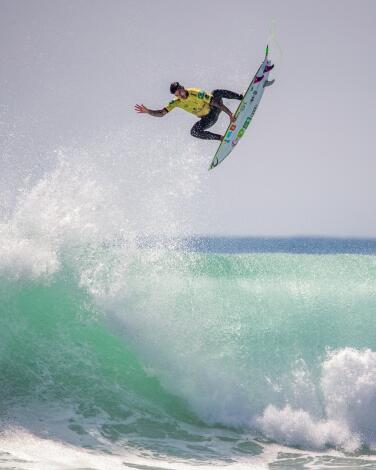
The southernmost break counterintuitively named “Middles,” the infamous and overcrowded “Lowers,” its near-perfect breaking neighbor “Uppers” and the northernmost break “Cottons” host some of the longest breaking waves in Southern California. Because Trestles is located on Camp Pendleton, there’s been little land development, so the surrounding environment is unique compared to a built-up Southern California, said Kevin Wallis, director of forecasting at Surfline.com, the surf industry’s most popular wave tracking platform.
Expert tip: “The San Mateo Creeks emptying out into the ocean has helped create good sandbars, points and reefs,” said Wallis, referring to the environmental factors that contribute to the way the waves break. “Trestles is a mixture of cobblestone and sand that’s been built up and in the case of Lowers, which would be the premier wave of the Trestles break. … [It’s] ground zero for high-performance surfing for Southern California.”
Local vibes: “It’s one of those really special waves that allows you to visually see your performance and how you grow as a surfer. It’s easier to surf the wave than it is to catch one. … You’re shoulder-to-shoulder with 100 of your not-so-best friends,” said Sean Jansen, a San Clemente local and surfer.
When to surf this spot: Late spring through mid-fall during the early to mid-morning hours.
Best for: Middles is a great spot for beginners; all other breaks are best for more intermediate to advanced surfers.
Parking: California State Parks lot costs $15 for the day; street parking is free.
'It’s like knowing all the animals in the zoo' at Newport Beach breaks
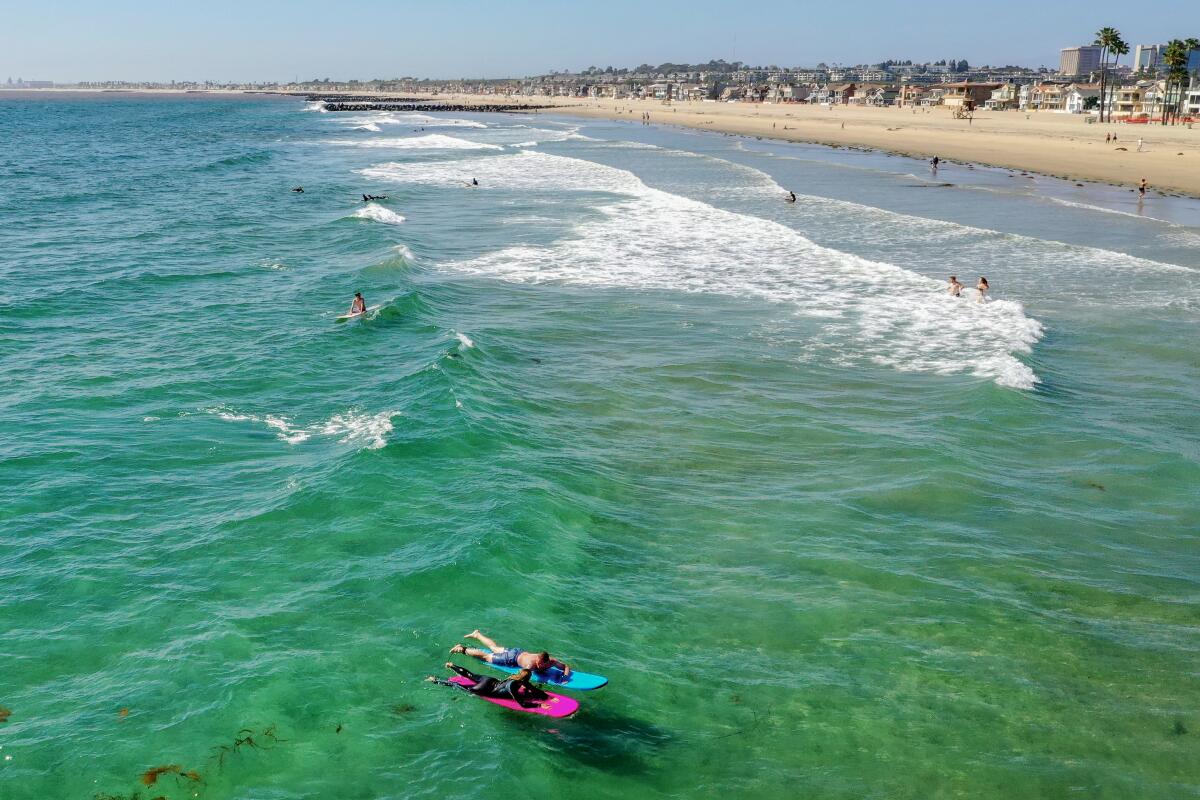
Waves break in between rock jetties and, depending on the swell direction, unique underwater features like Newport Canyon and the coastline’s geography can impact the breaks too. Additionally, rainwater runoff from the Santa Ana River mouth shifts the coast’s sandy bottom, always keeping surfers on their toes, said Wallis.
Expert tip: “Newport is a really dynamic, interesting stretch of coast that’s not particularly big. From the Wedge to the Santa Ana River … you get all sorts of different types of waves from fast barreling types of waves to big mutant waves at [the] Wedge,” said Wallis. “You have refraction, which is when a swell feels the bottom and bends toward an area, and also swell reflection, which is when you’ve got swell coming in along a break wall or a long jetty and essentially bouncing off that jetty like you see at the Wedge.”
Local vibes: “There’s a big positivity about knowing who is next to you in the water,” said T.K. Brimer, owner of the Frog House surf shop. “You’re battling for waves trying to surf, it’s like knowing all the animals in the zoo. There are some animals in the zoo that you don’t try to pet because they will bite you and then there are lots that are friendly and lovable. If you’re new in the area and you don’t know who the biter is, that could end up ruining your day.
When to surf this spot: Year-round during the early to mid-morning hours.
Best for: Newport Pier is ideal for beginners; all other breaks are best for more advanced surfers.
Parking: 14 hourly parking lots are available, as well as free street parking along the Balboa Peninsula; California State Parks lots are available at Magnolia Street and Pacific Coast Highway for $15 per day.
'There's almost always something to ride' in Huntington Beach
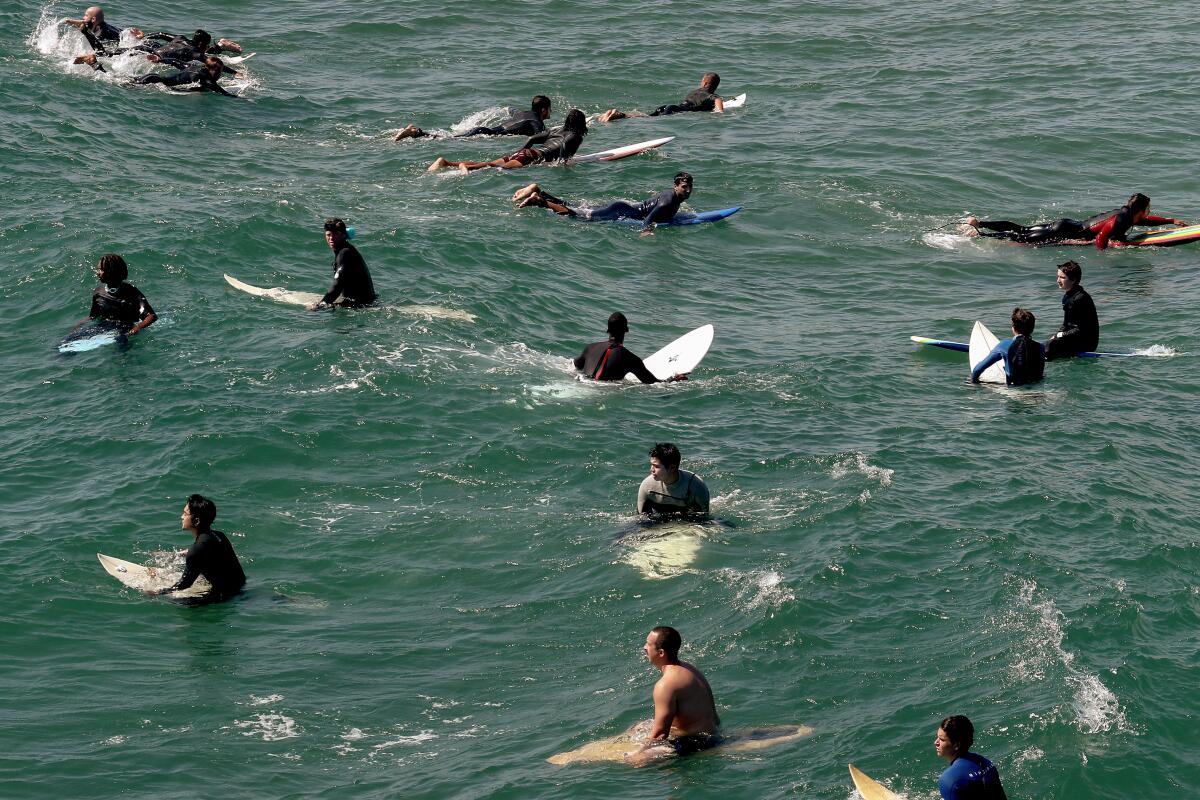
Along its roughly seven-mile sandy coastline, surf breaks can be found north and south of the Huntington Beach Pier with a host of locals who, depending on the day, might welcome an extra surfer or two. Within the long stretch of beach and the sandy San Pedro Shelf that extends offshore, waves can be temperamental depending on the swell and the tides. From beginner to advanced, surfers can find more crowded breaks located directly north and south of the Huntington Beach Pier or may discover a peak to surf all to themselves.
Expert tip: “The San Pedro shelf, which is a large area of shallow water that extends from San Pedro out ... [is] between a few feet to 600 feet deep or so,” said Wallis. “It can really focus different types of swells into the Huntington Beach area,” he added. “Huntington is super consistent, it’s open to all varieties of swell directions and swell periods. … There’s almost always something to ride in Huntington Beach, probably more so than any other spot in Southern California.”
Local vibes: “The waves have power, especially closer to the pier. We have both friendly and tough people out in the water — especially if you are a woman, but we don’t have many women in the water,” said Francine Freire, a Huntington Beach local and surfer. “Most of the locals are friendly, but sometimes even though the wave is yours, they don’t respect that, so you have to be aggressive.”
When to surf this spot: Year-round during the early to mid-morning hours.
Best for: Bolsa Chica State Beach is ideal for beginners and is located between Warner Avenue and Seapoint Avenue along Pacific Coast Highway; Northside and southside of the pier are best for intermediate to advanced surfers.
Parking: Beach and city parking are available along the coast for an hourly rate; California State Parks lots are available for $15 per day.
Patience is a virtue in Manhattan Beach, but there's plenty of parking
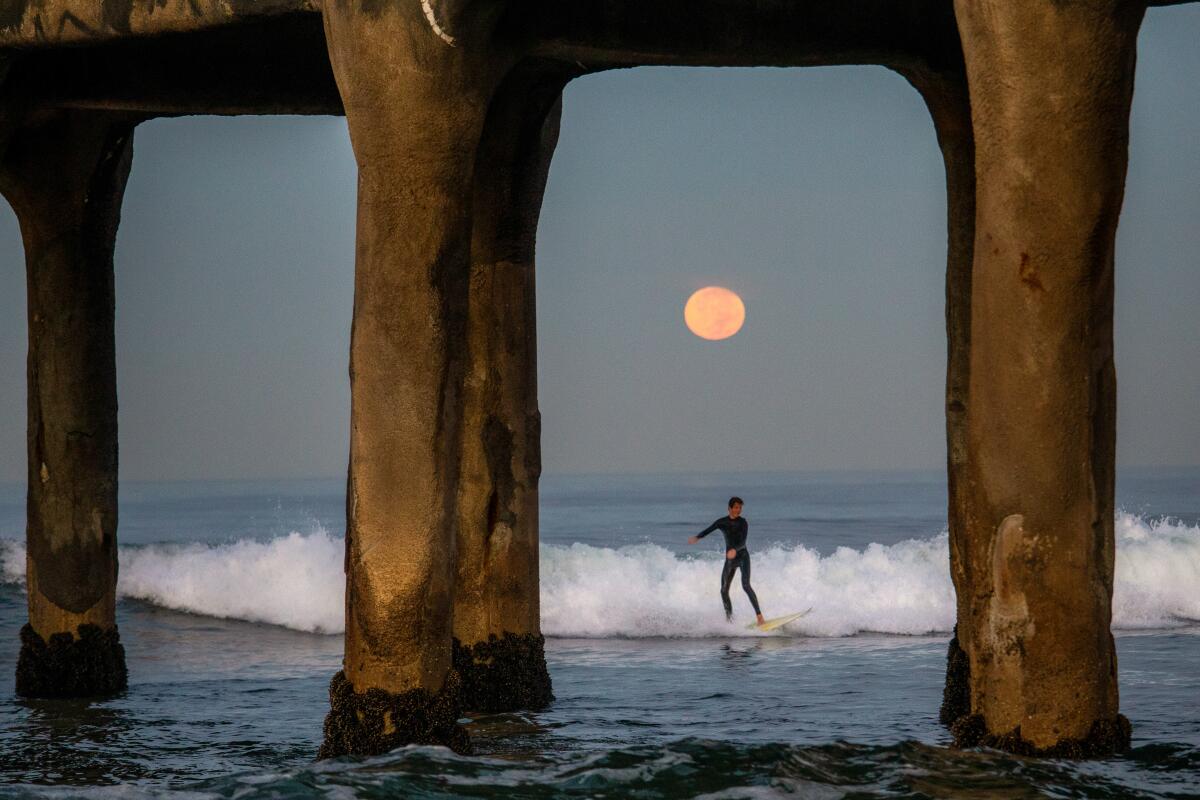
El Porto, the area’s more popular break, features the Santa Monica Canyon located just offshore and funnels swell from all directions into this short stretch of beach. However, the waves, more often than not, will “close out” or break all at once, according to local surfers, which can be ideal practicing grounds for beginners but not as exciting for more advanced surfers. El Porto typically experiences smaller surf in the summertime, as opposed to its neighboring beach towns in Orange County and North Los Angeles County, and due to the heavy rainfall and lack of swell, the sandy bottom had not been conducive for surfing for much of July.
Manhattan Beach was also the center of controversy in 2021. On Presidents Day that year, an older white surfer shouted a racial slur at young Black surfers, sparking a surf activism movement.
Expert tip: “The South Bay is somewhat of a weird zone in that it’s bad when a lot of other spots are good, meaning it can be clean, sunny and beautiful, but closed out and just not that great for surfing. But when a lot of other spots are bad and other spots are stormy, the South Bay is pretty good,” said Wallis. “I think to be a South Bay surfer, it takes patience and a willingness to put up with bad surf [conditions] a lot. There’s always something to ride, but then you get these days that are freaky, weird and [there] can be really good [waves].”
Local vibes: “You’ve got a huge parking lot that services the beach ... so expect a lot of people from all places and all levels there,” said Tyler Wilde, a Manhattan Beach local and surfer. “Suffice it to say that with El Porto, you’ve got such a wide range of people at a pretty challenging beach break, all scrapping for a rare corner or at least an exciting closeout. Because of the lack of waves and the perceived ‘right’ to them, you get the sense that you’re going to have to be aggressive to catch anything, even if that means rudely snaking someone, but doing it with a smile.”
When to surf this spot: Early morning hours in the wintertime. El Porto in the winter is best for advanced surfers; Manhattan Beach waves can break in the summer as long as the swell comes straight from the southerly direction.
Best for: Intermediate to advanced surfers.
Parking: Parking is available within 12 city lots at $2 per hour.
